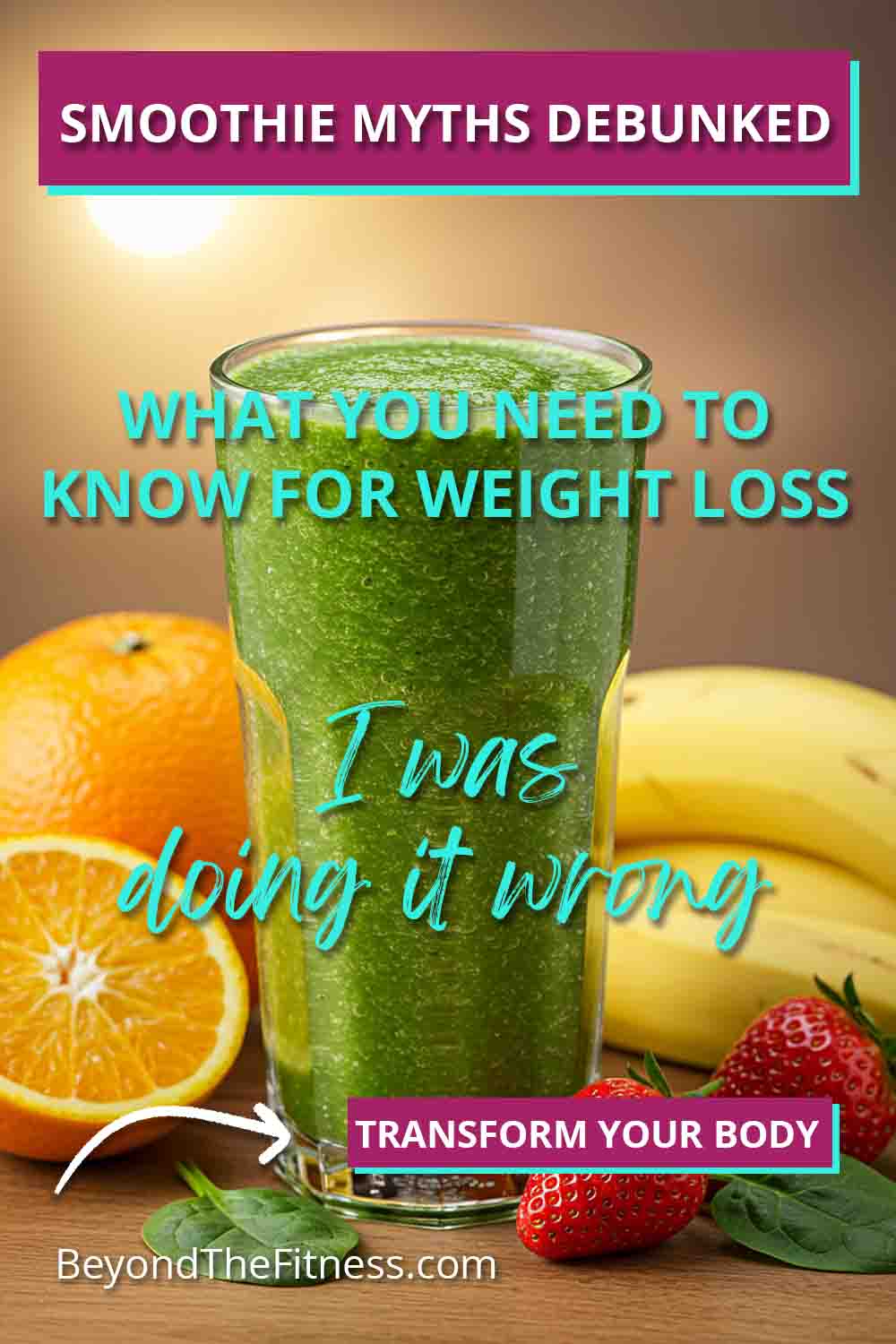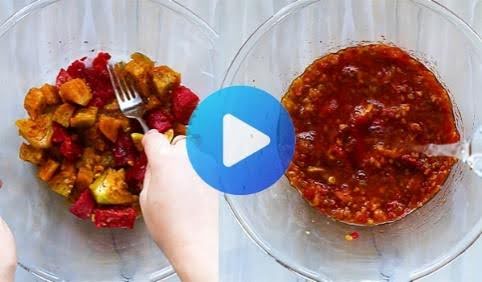Smoothies seem like a great idea, especially when you are trying to lose weight. They are quick, easy, and can be packed with fruits and vegetables. But I have seen many clients get tripped up by smoothies. They think they are making a healthy choice, but sometimes, these blended drinks can actually work against their weight loss goals. Let’s talk about some common myths surrounding smoothies and figure out how to make them truly work for you.
Understanding Smoothies and Weight Loss
First off, what exactly is a smoothie? Generally, it is a thick drink made from blended raw fruit or vegetables with other ingredients such as water, ice, dairy products like milk or yogurt, or non-dairy milks. People often add things like protein powder, nuts, seeds, or sweeteners.
Why do so many people turn to smoothies when trying to shed pounds? One reason is convenience. It is faster to blend a drink than to cook a full meal. Another is the health halo effect. Because smoothies often contain fruits and vegetables, people assume they must be good for weight loss. They can be a good way to get more nutrients into your day, especially if you struggle to eat enough whole fruits and veggies.
However, there are potential problems. Smoothies can be surprisingly high in calories and sugar, especially if you are not careful about what goes into them. Also, drinking your calories might not keep you feeling full as long as eating solid food does. This can lead to overeating later. So, while smoothies can be part of a weight loss plan, they are not automatically helpful. It all depends on how you make them and how they fit into your overall diet.
Myth 1: All Smoothies Are Healthy Heroes
This is probably the biggest myth I encounter. Just because something is blended and contains fruit does not automatically make it healthy or good for weight loss. Think about it: you can blend cookies and ice cream, and that is technically a smoothie (or a milkshake), but definitely not a health food.
The main issue is often sugar and calories. While fruits contain natural sugars, blending large amounts of fruit concentrates that sugar. A smoothie might contain three or four servings of fruit, which is much more sugar than you would likely eat if you were eating the fruits whole. Many people also add sweeteners like honey, maple syrup, or agave nectar, piling on even more sugar. Fruit juices used as a base are another major source of hidden sugar without much fiber.
Calories can add up incredibly fast. Ingredients like full-fat yogurt, nut butters, coconut milk, seeds, and avocado are healthy in moderation, but they are also calorie-dense. If you load up your smoothie with too many of these, you could easily end up drinking 500, 600, or even more calories in one glass. That might be more than a regular meal, but it might not keep you feeling satisfied for as long.
Fiber is another consideration. Blending breaks down some of the fiber in fruits and vegetables. While you still get fiber, it might not be as effective at slowing digestion and promoting fullness as the fiber in whole foods. Some juicers remove fiber almost entirely, which is why I generally recommend smoothies over juices.
Let’s look at an example of a potentially unhealthy smoothie:
- Large banana
- 1 cup mango chunks
- 1 cup pineapple chunks
- 1 cup orange juice
- 2 tablespoons honey
- 1/2 cup full-fat vanilla yogurt
This smoothie sounds tropical and delicious, but it is packed with sugar (from the fruits, juice, honey, and flavored yogurt) and likely contains well over 500 calories. It lacks significant protein and healthy fats to balance the sugar and promote fullness. This kind of smoothie can spike your blood sugar and lead to a crash later, making you feel hungry again soon.
Myth 2: Smoothies = Automatic Weight Loss
If only it were that simple. Drinking a smoothie every day does not guarantee weight loss. Weight loss fundamentally comes down to consuming fewer calories than your body burns over time. This is often called creating a calorie deficit.
Smoothies can fit into a calorie deficit, but they can also easily push you over your calorie goal if you are not mindful. As we just discussed, they can be calorie bombs. If you add a high-calorie smoothie on top of your regular meals without adjusting anything else, you will likely gain weight, not lose it.
Another factor is how our bodies process liquid calories versus solid calories. Research suggests that liquid calories might not register the same way in our brains and stomachs as calories from solid food. This means a 400-calorie smoothie might not make you feel as full or satisfied as a 400-calorie meal consisting of whole foods like chicken breast, broccoli, and quinoa. Chewing itself sends signals to your brain that you are eating, which contributes to feelings of fullness. When you drink a smoothie, you bypass this step. This lack of satiety can make it harder to stick to your overall calorie goals because you might feel hungry again sooner.
Therefore, smoothies are not a magic bullet. They are just one type of food (or drink). Their impact on your weight depends entirely on the ingredients, the portion size, and how they fit into the context of your total daily calorie intake and expenditure. You still need a balanced diet and, ideally, regular physical activity to lose weight effectively and sustainably.
Myth 3: Drink as Much as You Want
Because smoothies can seem light and healthy, some people think they can drink them in large quantities without consequence. This is a mistake. Portion control is just as important with smoothies as it is with any other food or drink when you are managing your weight.
As mentioned, liquid calories add up very quickly. It is easy to drink a large, 24-ounce smoothie packed with ingredients without fully realizing how many calories you are consuming. If that smoothie contains 600 calories, and you drink it as a snack between meals, you have significantly increased your daily calorie intake. Doing this regularly will hinder weight loss.
Understanding your personal daily calorie needs is important. This varies based on factors like your age, sex, weight, height, activity level, and metabolic rate. Once you have an estimate of your daily needs, you can figure out how a smoothie fits into that budget. A weight-loss smoothie should typically range from 250 to 400 calories if it is replacing a meal, and perhaps 150 to 250 calories if it is a snack. Drinking smoothies larger than this, or drinking multiple smoothies a day without accounting for the calories, can easily sabotage your efforts. Treat a smoothie like any other meal or snack – be mindful of the portion size and the total calories.
Myth 4: Smoothies Are Perfect Meal Replacements
Smoothies are often marketed or used as meal replacements, especially for breakfast or lunch. Can they serve this purpose? Yes, but only if they are constructed properly. A smoothie that is just fruit and juice is not a balanced meal.
A complete meal should provide a good balance of macronutrients: protein, carbohydrates, and healthy fats. It should also contain fiber, vitamins, and minerals. Protein and fiber are particularly important for satiety – that feeling of fullness and satisfaction after eating. Healthy fats also contribute to satiety and are essential for hormone production and nutrient absorption.
To make a smoothie a balanced meal replacement, it needs to include sources of all these components.
- Protein: Greek yogurt, cottage cheese, tofu, protein powder (whey, casein, soy, pea, etc.), even beans like white beans or chickpeas (you will not taste them).
- Healthy Fats: Avocado, nuts (almonds, walnuts), seeds (chia, flax, hemp), nut butter (use sparingly due to calorie density).
- Fiber: Leafy greens (spinach, kale – you usually cannot taste them much), chia seeds, flax seeds, psyllium husk, oats, vegetables like zucchini or cauliflower (surprisingly neutral in taste), along with the fiber from fruits.
- Carbohydrates: Primarily from fruits and vegetables, maybe a small amount of oats. Choose lower-sugar fruits more often.
- Liquid Base: Water, unsweetened almond milk, unsweetened soy milk, or low-fat dairy milk are better choices than fruit juice.
Even a well-balanced smoothie might not be as satisfying as a solid meal for some people due to the lack of chewing and the speed of consumption. Also, relying too heavily on liquid meals might mean you miss out on the digestive benefits and enjoyment of eating whole foods. It is generally best to include a mix of liquid and solid meals in your diet. If you use a smoothie as a meal replacement, ensure it is nutrient-dense and balanced, not just a sugary fruit blend.
Myth 5: Fruit-Only Smoothies Are the Gold Standard
Fruits are healthy, providing vitamins, minerals, antioxidants, and fiber. However, a smoothie made entirely or mostly of fruit is often too high in sugar and lacks the protein and healthy fats needed for balance and satiety.
As we discussed, blending concentrates the natural sugars in fruit. Drinking a large amount of fruit sugar in liquid form can cause a rapid spike in blood sugar, followed by a crash. This can leave you feeling tired, irritable, and craving more sugar. Over time, frequent blood sugar spikes can contribute to insulin resistance, which makes weight loss harder, particularly for women who may be more sensitive to hormonal fluctuations influenced by blood sugar.
A balanced smoothie should treat fruit as one component, not the main event. Aim for about 1/2 to 1 cup of fruit per smoothie. Berries (like strawberries, blueberries, raspberries) are excellent choices because they are lower in sugar and high in antioxidants and fiber compared to tropical fruits like mango, pineapple, or bananas. Pair the fruit with protein, healthy fats, and ideally some vegetables (like spinach or kale) to create a more balanced, satisfying, and blood-sugar-friendly drink.
Myth 6: You Need Fancy, Expensive Ingredients
Walk down the health food aisle, and you will see countless powders, boosters, and “superfoods” marketed for smoothies – things like maca powder, spirulina, acai powder, goji berries, and expensive protein blends. While some of these can offer nutritional benefits, they are absolutely not necessary for making a healthy, weight-loss-friendly smoothie.
You Might Be Interested In: Learning more about The Complete Smoothie Detox & Weight Loss Program
You can create incredibly nutritious smoothies using simple, affordable, everyday ingredients found in any grocery store.
- Protein: Plain Greek yogurt, cottage cheese, milk, soy milk, tofu, canned beans.
- Healthy Fats: Peanut butter, almonds, walnuts, sunflower seeds, flax seeds, chia seeds (often cheaper bought in bulk).
- Fiber/Veggies: Spinach, kale (buy frozen for savings), zucchini, frozen cauliflower rice, oats.
- Fruits: Bananas, apples, frozen berries (very cost-effective), oranges.
- Liquids: Water, unsweetened almond milk (store brands are fine).
Focus on getting a good mix of protein, healthy fats, and fiber from basic whole foods. These provide the essential nutrients your body needs without the hefty price tag of specialty items. Nutrient density – getting lots of vitamins, minerals, and beneficial compounds per calorie – is important, but it does not have to come from exotic or expensive sources. A simple spinach, berry, Greek yogurt, and flax seed smoothie is packed with nutrients and is great for weight management. Do not feel pressured to buy trendy superfoods; consistency with basic healthy habits matters more.
Myth 7: Store-Bought Smoothies Are Fine
Grabbing a pre-made smoothie from a cafe or grocery store seems convenient, but it is often a nutritional gamble. Many commercially prepared smoothies are loaded with hidden sugars, unhealthy fats, and excessive calories.
Smoothie shops often use fruit juices, sorbets, frozen yogurt, or sugary syrups as bases or sweeteners. Portion sizes can also be enormous, easily exceeding 500 calories. Even smoothies marketed as “healthy” or “green” can contain surprisingly high amounts of sugar to make them taste better. You also lose control over the quality and quantity of ingredients. They might use sweetened yogurts, lower-quality protein powders, or minimal amounts of the advertised healthy ingredients like spinach.
Always check the nutrition information if it is available. Look closely at the calories, sugar content (especially added sugars), protein, and fiber. If nutrition information is not provided, be skeptical. Your best bet is almost always to make smoothies at home where you have complete control over what goes in. It is cheaper, healthier, and ensures your smoothie aligns with your weight loss goals. If you must buy one, ask for modifications like using water or unsweetened milk instead of juice, skipping added sweeteners, and maybe adding a scoop of plain protein powder if available.
Myth 8: Smoothies Will Detox Your Body
The idea of “detoxing” or “cleansing” with smoothies or juices is very popular, but it is largely a myth. Your body has incredibly efficient built-in detoxification systems: your liver, kidneys, lungs, skin, and digestive tract. These organs work around the clock to filter waste products and toxins from your body.
There is no scientific evidence that drinking specific smoothies or following a smoothie-only “detox” diet enhances the function of these organs or removes toxins more effectively. In fact, restrictive detox diets can be low in essential nutrients like protein and fiber, leading to fatigue, muscle loss, and other issues. They often lead to temporary water weight loss, which people mistake for fat loss, but the weight usually comes back once normal eating resumes.
Instead of seeking a quick fix through a “detox,” focus on supporting your body’s natural detoxification processes through consistent healthy habits. This includes eating a balanced diet rich in whole foods (fruits, vegetables, lean proteins, whole grains, healthy fats), staying well-hydrated with water, getting enough sleep, managing stress, and engaging in regular physical activity. A well-constructed smoothie can be part of this healthy lifestyle, providing nutrients that support overall health, but it is not a magic detox potion.
Myth 9: Just Add Protein Powder and It’s Healthy
Protein is crucial for weight loss. It helps build and maintain muscle mass (which burns more calories at rest), increases satiety, and has a slightly higher thermic effect (meaning your body burns more calories digesting protein compared to fats or carbs). Adding protein powder to a smoothie can be a convenient way to boost its protein content and make it more filling.
However, simply adding protein powder does not automatically make any smoothie healthy.
First, consider the smoothie’s other ingredients. If you add protein powder to that high-sugar, high-calorie fruit bomb we talked about earlier, it is still a high-sugar, high-calorie smoothie, just with added protein. It is the overall balance that matters.
Second, not all protein powders are created equal. Many contain added sugars, artificial sweeteners, fillers, or other unwanted ingredients. Always read the ingredient list and nutrition facts panel. Look for powders with minimal ingredients, little to no added sugar, and a good amount of protein per scoop (typically 20-30 grams). Choose reputable brands. Unflavored options give you more control over the final taste and sugar content of your smoothie.
Third, more protein is not always better. While protein is important, your body can only utilize so much at one time. Excess protein can still be converted and stored as fat if your overall calorie intake is too high. Aim for around 20-30 grams of protein in a meal-replacement smoothie.
Adding a quality protein source is a great step towards building a better smoothie, but it needs to be part of a balanced recipe that also manages sugar and overall calories.
Building a Weight-Loss-Friendly Smoothie
Okay, enough myth-busting. How do you actually make a smoothie that helps your weight loss efforts? Focus on balance and nutrient density. I recommend following a basic formula:
The Formula:
- Liquid Base (1 cup): Choose unsweetened options.
- Good choices: Water, unsweetened almond milk, unsweetened soy milk, unsweetened cashew milk, green tea (cooled), coconut water (in moderation, check for sugar), low-fat or skim milk.
- Avoid: Fruit juices, sweetened milks, full-fat coconut milk (use sparingly).
- Protein (20-30 grams for meal replacement, 10-15 for snack): Essential for fullness and muscle support.
- Good choices: Plain Greek yogurt (0% or 2%), cottage cheese, quality protein powder (whey, casein, egg white, soy, pea, hemp – check labels for sugar), silken tofu, 1/4 cup white beans or chickpeas.
- Healthy Fat (1 serving): For satiety and nutrient absorption.
- Good choices: 1/4 avocado, 1 tablespoon chia seeds, 1 tablespoon flax seeds, 1 tablespoon hemp seeds, 1 tablespoon nut butter (almond, peanut, cashew – measure carefully), 1/4 cup nuts (almonds, walnuts).
- Fiber & Veggies (1-2 handfuls): Adds volume, nutrients, and fiber with minimal calories.
- Good choices: Spinach, kale, romaine lettuce, cucumber, celery, zucchini (raw or frozen), frozen cauliflower rice. These have very mild flavors in smoothies.
- Fruit (1/2 – 1 cup): For flavor, vitamins, and some carbs. Prioritize lower-sugar options.
- Good choices: Berries (strawberries, blueberries, raspberries, blackberries – fresh or frozen), peaches, plums, cherries, half a banana, apple chunks.
- Use sparingly: Mango, pineapple, grapes, dates (very high sugar).
- Optional Boosters: Spices like cinnamon or ginger, unsweetened cocoa powder, vanilla extract, a squeeze of lemon or lime.
Portion Size: Aim for a total volume of around 12-16 ounces for a meal replacement smoothie (roughly 300-400 calories) and 8-10 ounces for a snack (150-250 calories). Use measuring cups and spoons, especially for calorie-dense ingredients like nut butters and seeds.
Smoothies and Exercise
Smoothies can be useful around your workouts if planned correctly.
Pre-Workout: About 60-90 minutes before exercise, you might want a smaller, easily digestible smoothie focused on carbohydrates for energy, with a little bit of protein. Something like half a banana, spinach, water or almond milk, and maybe half a scoop of protein powder could work. Avoid too much fat or fiber right before a workout, as they slow digestion.
Post-Workout: Within an hour or two after your workout, a smoothie can be great for recovery. Focus on protein to repair muscles and carbohydrates to replenish glycogen stores. A typical recovery smoothie might include 1 cup unsweetened liquid, 1 scoop protein powder, 1/2 cup fruit (like berries or banana), and a handful of spinach. This helps kickstart the muscle repair process.
Remember hydration is also key. While smoothies contain liquid, make sure you are also drinking plenty of plain water throughout the day, especially around exercise.
Smoothies for Women: Special Considerations
Nutritional needs can differ slightly for women, and smoothies can be tailored to address these.
- Hormonal Balance: Ingredients like flax seeds contain lignans, which may have a positive effect on estrogen balance. Including a tablespoon of ground flaxseed is an easy addition. Managing blood sugar through balanced smoothies (not too much fruit sugar, enough protein and fat) is also crucial for hormonal health.
- Iron Needs: Women, especially pre-menopausal women, have higher iron requirements. Spinach and kale are good plant-based iron sources, although the iron is less easily absorbed than from animal sources. Adding a source of Vitamin C (like berries or a squeeze of lemon) to your green smoothie can enhance iron absorption.
- Bone Health: Ensure adequate calcium and Vitamin D. If using dairy milk or Greek yogurt, you will get calcium. Fortified non-dairy milks and fortified orange juice (use sparingly due to sugar) can also contribute. Some leafy greens contain calcium too.
- Managing Cravings: Balanced smoothies with enough protein, fat, and fiber can help stabilize blood sugar and reduce the cravings that can sometimes derail weight loss efforts, particularly those linked to the menstrual cycle.
Making Smoothies Fit Your Lifestyle
Consistency is key for weight loss. Make smoothies work for you:
- Meal Prep: Prepare smoothie packs ahead of time. Portion out your solid ingredients (fruit, veggies, seeds, protein powder) into individual freezer bags or containers. When ready to blend, just dump the contents into your blender, add your liquid base, and blend.
- Adjust for Goals: If your goal shifts from weight loss to weight maintenance or muscle gain, adjust your smoothie accordingly. You might add slightly more calories through healthy fats or complex carbs like oats.
- Listen to Your Body: Pay attention to how different smoothie combinations make you feel. Do they keep you full? Do they give you energy? Do you digest them well? Adjust ingredients based on your individual response. Smoothies are versatile, so experiment to find what works best for you.
Smoothies can be a valuable tool in your weight loss journey, but they are not magic. By busting these common myths and focusing on building balanced, nutrient-dense, and portion-controlled smoothies, you can make them a delicious and effective part of your healthy lifestyle.
Related YouTube Video
Final Thoughts
Making smart choices about what goes into your blender is really important. Smoothies offer a great way to get nutrients quickly, but they need to be built thoughtfully to support weight loss rather than hinder it. Remember that balance, portion sizes, and whole foods are your best friends on this journey. Focus on creating sustainable habits that include a variety of healthy foods, both solid and liquid, along with regular movement.







